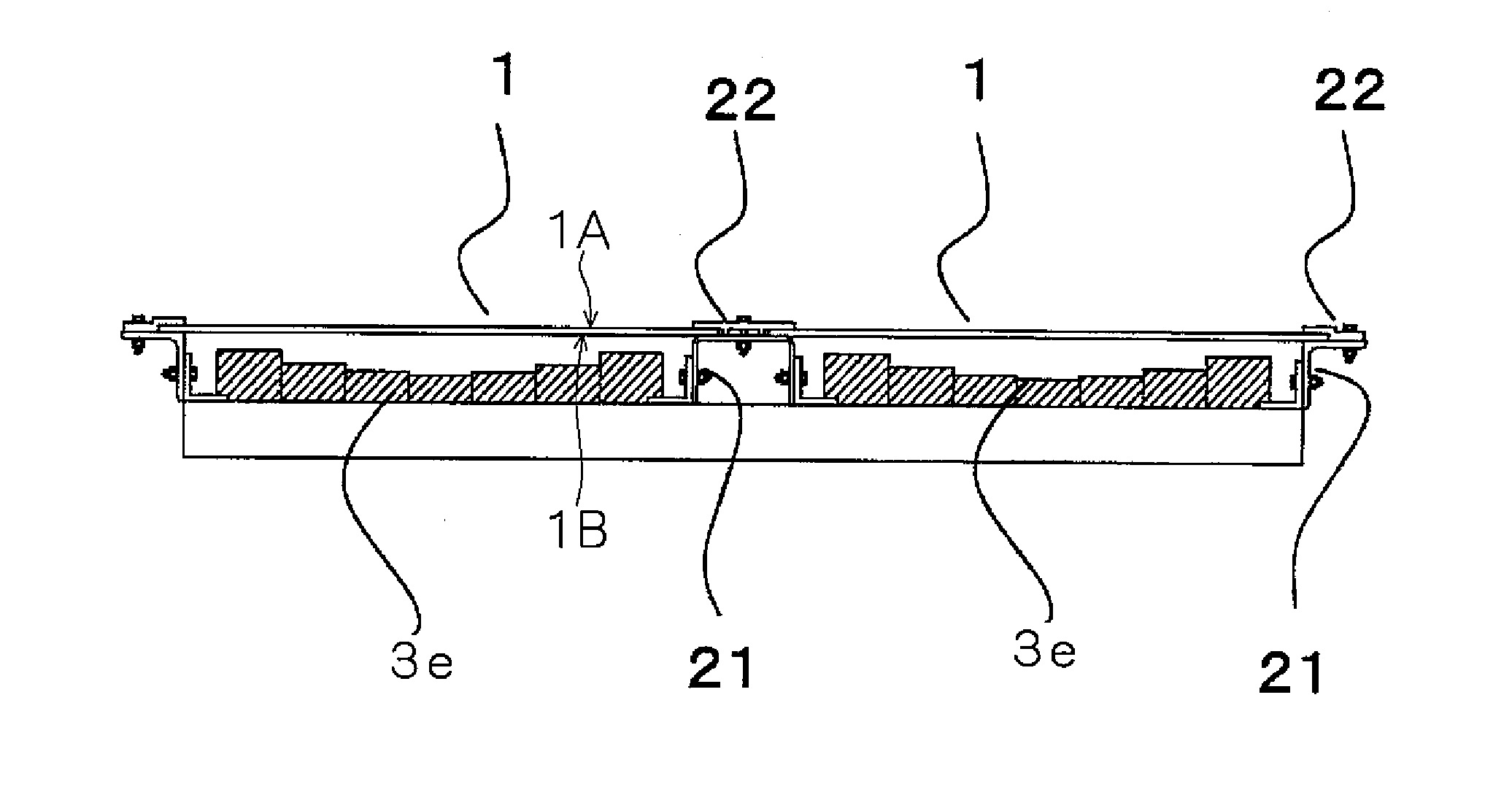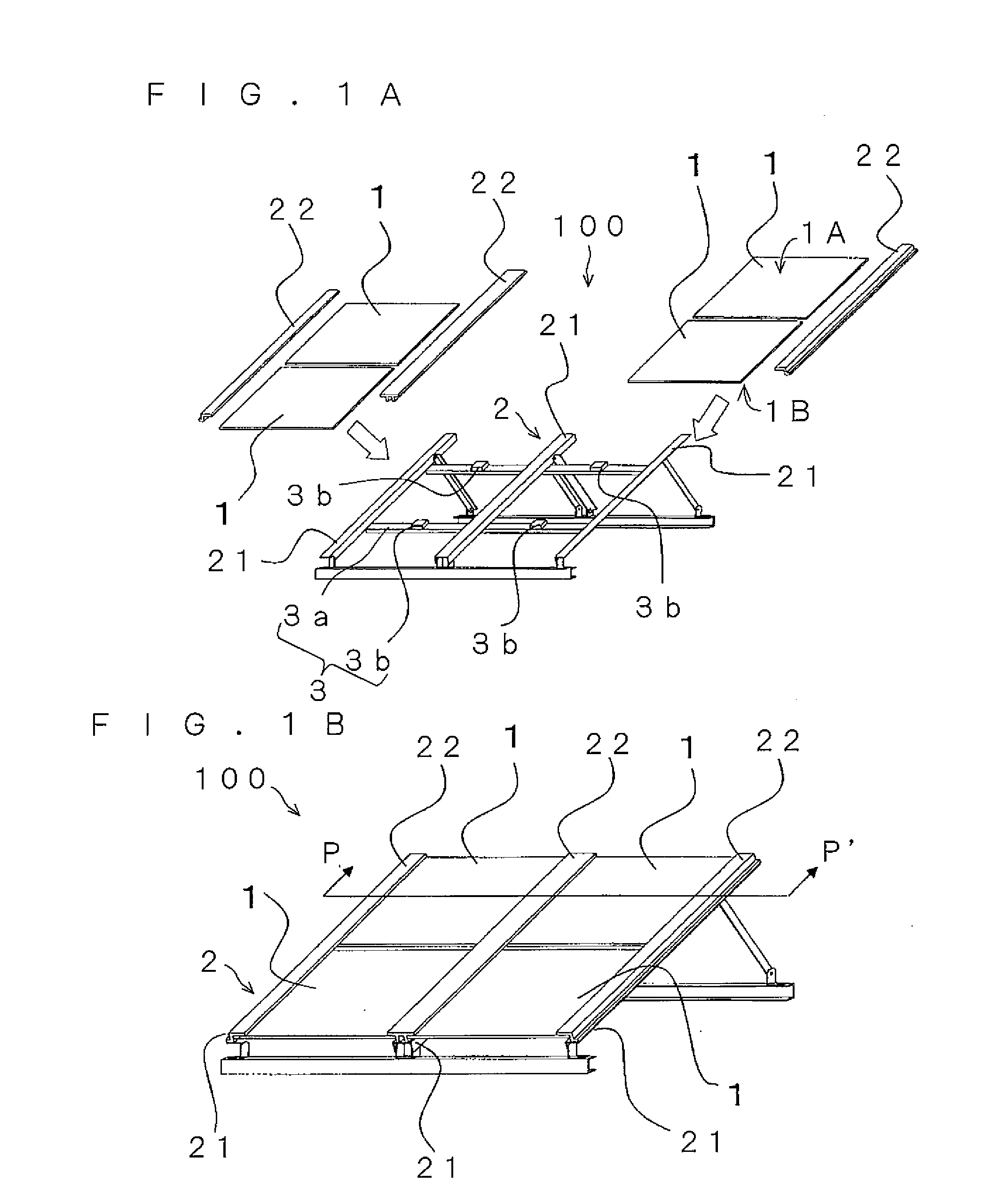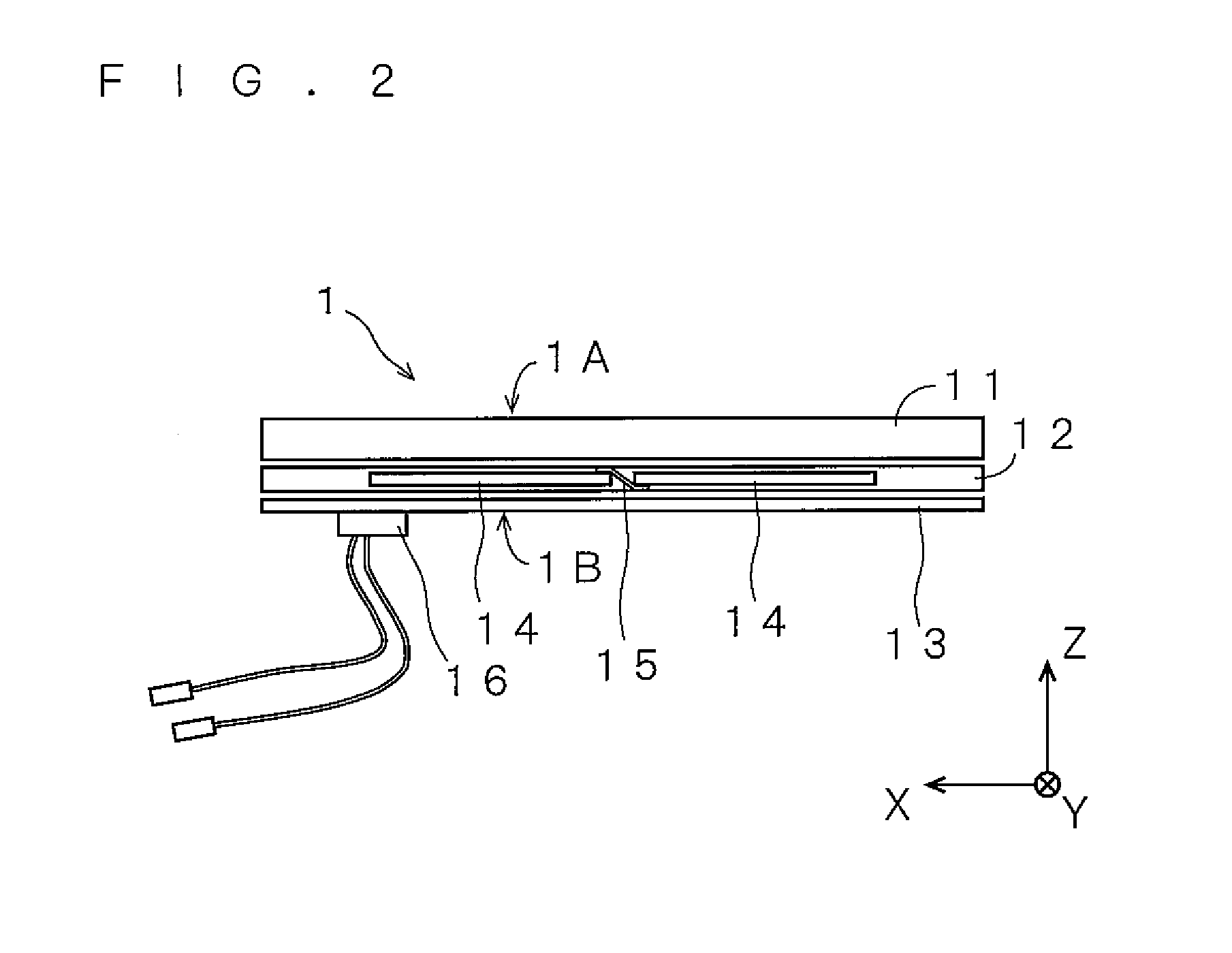Photovoltaic Power Generating System
a photovoltaic power generation and photovoltaic technology, applied in the direction of pv power plants, heat collector mounting/support, light and heating equipment, etc., can solve the problems of deterioration of strength, easy bending of modules, and easy breakage so as to reduce the maximum absolute value of bending moment of solar cell modules, reduce the effect of power generating efficiency and increase the load-carrying capacity of photovoltaic power generating systems
- Summary
- Abstract
- Description
- Claims
- Application Information
AI Technical Summary
Benefits of technology
Problems solved by technology
Method used
Image
Examples
first embodiment
[0028]
[0029]As shown in FIG. 1, a photovoltaic power generating system 100 generally includes solar cell modules 1, an installation platform 2, and supporting member 3. It is only necessary that the installation platform 2 holds a pair of ends (ends of opposed sides) of the solar cell modules 1 and for example, the installation platform 2 includes a plurality of holding members 21, and a plurality of locking members 22 that sandwich and fix the ends of the solar cell modules 1 together with holding members 21. The supporting member 3 is provided on the side of a non-light-receiving surface of the solar cell module 1.
[0030]
[0031]The solar cell module 1 can employ various structures such as a superstrate structure, a glass package structure and a substrate structure. Solar cell modules of the superstrate structure will be described as an example. The superstrate structure can be applied to monocrystalline silicon solar cells and polycrystalline silicon solar cells that are manufacture...
second embodiment
[0062]Next, a configuration of a photovoltaic power generating system 100a according to a second embodiment of the present invention will be described with reference to FIG. 7. In the description of this embodiment, elements having the same functions as those of the first embodiment are designated with the same symbols, and explanation thereof will be omitted. This also applies to other embodiments.
[0063]As shown in FIG. 7, the second embodiment includes a member 3a according to the first embodiment, and convex hollow supporting members 3c located above the member 3a.
[0064]Each of the supporting members 3c has a pyramidal shape whose cross section in the horizontal direction is gradually reduced toward the non-light-receiving surface 1B of the solar cell module 1. The supporting member 3c is made of elastic member (such as EPDM or natural rubber) so that it can be deformed when it abuts against the solar cell module 1.
[0065]According to this embodiment, if a positive pressure load ...
third embodiment
[0066]According to a third embodiment of the present invention, as shown in FIG. 8(a), supporting members 3d are provided on the side of the non-light-receiving surface 1B of the solar cell module 1. A distance between the supporting member 3d and the solar cell module 1 is set such that the distance becomes gradually smaller from a center portion toward end edges of the solar cell module 1. More specifically, a supporting surface 3dS of each of the supporting members 3d is curved in a concave manner with respect to the non-light-receiving surface 1B.
[0067]It is preferable that a distance between the supporting member 3d and the solar cell module 1 at each position is set such that the distance is smaller than a limit value of a bending amount of the solar cell module 1 at each position. It is preferable that the distance between the solar cell module 1 and the supporting member 3d is set such that the distance becomes the maximum at a center part of the solar cell module 1 when the...
PUM
 Login to View More
Login to View More Abstract
Description
Claims
Application Information
 Login to View More
Login to View More - R&D
- Intellectual Property
- Life Sciences
- Materials
- Tech Scout
- Unparalleled Data Quality
- Higher Quality Content
- 60% Fewer Hallucinations
Browse by: Latest US Patents, China's latest patents, Technical Efficacy Thesaurus, Application Domain, Technology Topic, Popular Technical Reports.
© 2025 PatSnap. All rights reserved.Legal|Privacy policy|Modern Slavery Act Transparency Statement|Sitemap|About US| Contact US: help@patsnap.com



